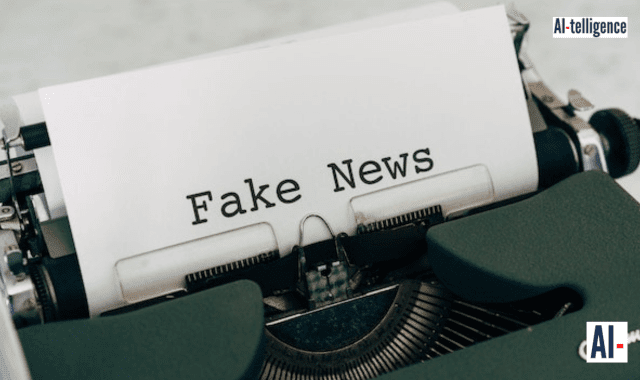How Generative AI is Making Fake News Worse
 Generative AI is Making Fake News Worse |
How Generative AI is Making Fake News Worse? Fake news has become a ubiquitous term in recent years, but the rise of generative AI is making the problem even worse. Generative AI refers to a type of artificial intelligence that is capable of generating new content, such as text, images, and videos.
While this technology has many beneficial applications, it also has a dark side. In this article, we will explore how generative AI is making fake news worse and what we can do to combat this problem.
Fake news: The Dark Side of Generative AI
Generative AI is a type of machine learning that involves training a neural network on a large dataset of existing content. Once the network has been trained, it is capable of generating new content that is similar in style and tone to the original data.
This technology has many useful applications, such as generating new product designs or creating realistic virtual environments.
However, the potential for misuse is also significant. Generative AI can be used to create fake news stories, social media posts, and even deep fake videos that are indistinguishable from the real thing.
This technology can be used to spread misinformation and manipulate public opinion, making it a powerful tool for those with nefarious intentions.
The Impact of Generative AI on Fake News
Generative AI has already been used to create fake news stories and social media posts. One example is the AI-generated article about the supposed discovery of a prehistoric giant penguin, which was picked up by several news outlets before it was revealed to be fake.
Another example is the AI-generated tweet that claimed that the Pope had endorsed Donald Trump, which went viral and was shared thousands of times before it was debunked.
The use of generative AI in creating deep fake videos is even more concerning. Deepfakes are videos that have been manipulated to make it appear as though someone is saying or doing something that they did not actually do.
Artificial intelligence can be used to create convincing fake videos of politicians, celebrities, or anyone else, and it can be used to spread misinformation and manipulate public opinion.
The Ethics of Generative AI
The development of generative AI raises ethical concerns that must be addressed. One of the most significant issues is the potential for this technology to be misused for malicious purposes. As we have seen, generative AI can be used to create fake news stories and deep fake videos, which can be used to manipulate public opinion and spread misinformation.
To address these concerns, responsible AI development is essential. This involves developing AI systems that are designed to prioritize ethical considerations, such as the potential impact on society.
It also involves creating systems that are transparent and accountable, so that developers and users can understand how the system works and how it is being used.
Regulating artificial intelligence also has a role to play in ensuring ethical use. Governments and regulatory bodies can create guidelines and regulations that require AI developers to prioritize ethical considerations and prevent the misuse of the technology.
There are corrective actions that can be readily implemented to reduce the damage of abuses. One such intervention is to watermark generative AI to help prevent fraud and false information. This would enable users to distinguish between real and fake content and help prevent the spread of fake news.
The Future of Generative AI and Fake News
Despite the potential for misuse, generative AI is a powerful tool that can be used for good. One potential solution is to develop AI systems that are capable of detecting and flagging fake news content.
This technology could be used by social media platforms and news organizations to quickly identify and remove fake news stories and social media posts before they can spread.
Another solution is to develop tools that can detect deep fake videos. This could involve using AI to analyze video content and identify any discrepancies or anomalies that suggest that the video has been manipulated.
While this technology is still in its early stages, it has the potential to be a powerful tool in the fight against fake news.
Ultimately, combating fake news will require a multi-pronged approach that involves not only technological solutions but also education and media literacy.
By educating the public about how to identify and avoid fake news, we can help to reduce its impact and prevent it from spreading.
Conclusion
Generative AI is a powerful technology that has the potential to transform many aspects of our lives. However, as with any new technology, there are risks and ethical considerations that must be addressed.
The use of generative AI in creating fake news stories and deep fake videos is particularly concerning, as it has the potential to manipulate public opinion and spread misinformation.
To address these concerns, it is essential that we prioritize responsible AI development and create systems that are transparent and accountable. Regulation can also play a role in ensuring the ethical use of generative AI.
However, ultimately, combating fake news will require a multi-pronged approach that involves not only technological solutions but also education and media literacy.
By working together to address these challenges, we can harness the power of generative AI for good, while also minimizing its potential negative impact.

.png)
Comments
Post a Comment